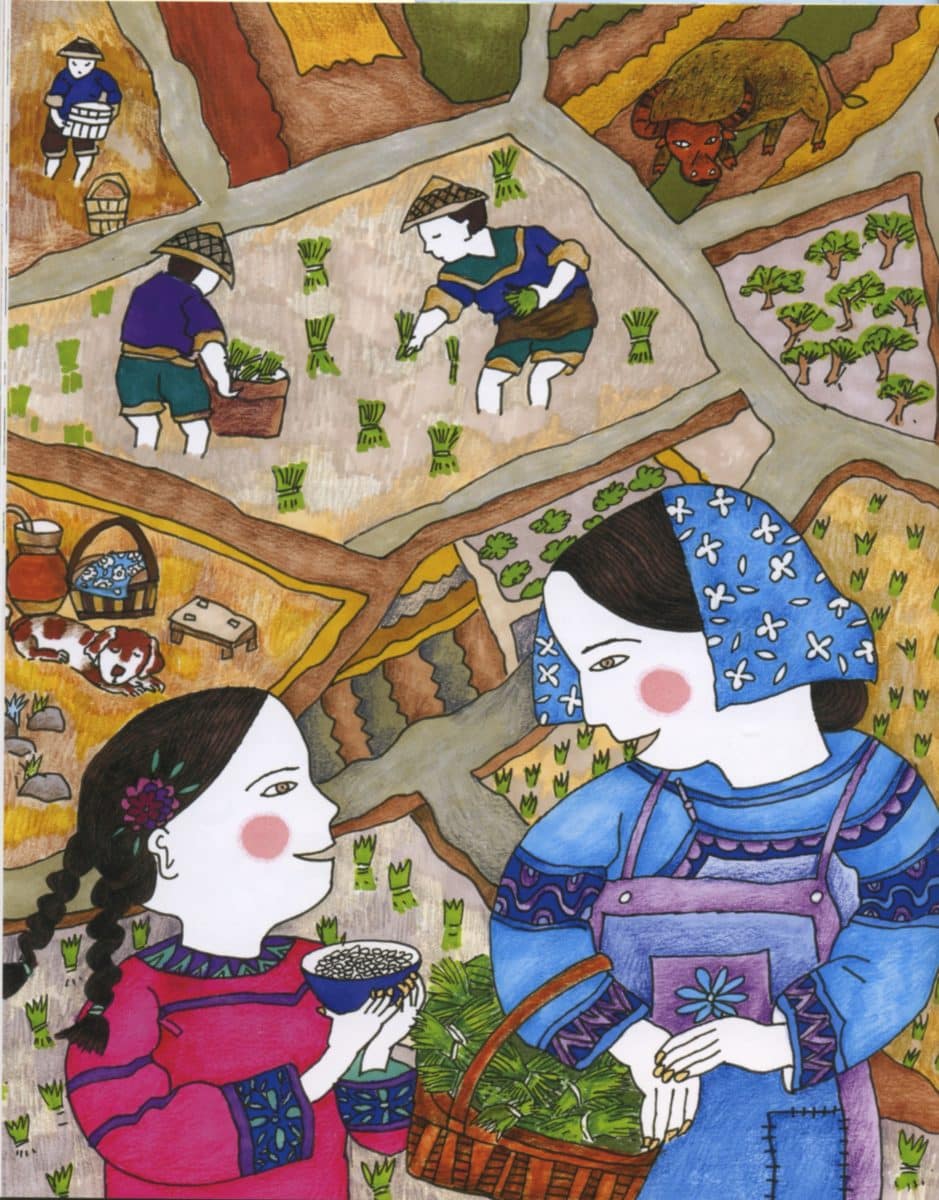A few years ago I was approached by my good friend Paul Yee, an award-winning author of books for children, to collaborate on a book. He was writing a collection of Chinese fairy tales, each focused on a different type of food. He asked if I would write recipes to highlight the food in each story. This was an opportunity that I could not refuse. The concept brought together reading and cooking for children and families. It introduced some Chinese culture and cuisine to its readers and the potential to bring parents into the kitchen with their children to create and enjoy the foods from these fairy tales.
There are a number of things to consider when choosing Chinese recipes for a book aimed at children. I wanted to represent authentic Chinese food, yet I needed to consider factors such as the availability of Chinese ingredients, safety and ease of preparation, and the appeal to children’s taste buds. I drew much inspiration from my childhood experiences and what my mother would cook for our family. I also wanted some recipes related to the preparation of other recipes, to reflect how one would cook at home. For instance, I chose a recipe for poached chicken so that a family could use the chicken stock to make won ton soup or could add the leftover chicken meat to noodles with peanut sauce.
Various supermarkets were checked for their stock of Chinese ingredients. This gave me the boundaries for the range of ingredients in the recipes, as not all communities have easy access to Asian markets or foods. Some recipes like Almond Jelly were selected because they did not rely on specific Chinese ingredients, to accommodate those living in more remote areas or those who were not as familiar with Chinese cuisine. Sometimes I suggested alternative ingredients to accommodate availability and personal preference.
Safety concerns played a big role in choosing recipes for the fairy tales. It is difficult to cook Chinese foods without using a knife or a very hot stove. Some recipes easily addressed safety concerns because they needed a minimal amount of cutting or heat. In all the recipes adult supervision was stressed as essential when children are in the kitchen doing any kind of food preparation. The use of ingredients like canned fruit, when appropriate, eliminates the necessity of having young children use knives.
Chinese cuisine requires a significant amount of ingredient preparation before the actual cooking begins. Some of these tasks are well suited to younger children to do whereas others can be assigned to family members with more kitchen experience. Ease of preparation influenced both the choice of recipes and the ingredients. Since cutting and slicing raw meats are generally more challenging for young cooks, the use of ground meats allows more autonomy in the kitchen for these budding chefs — and is a more economical protein choice for families. Tofu is also a budget-friendly ingredient that is easy to prepare and gives a vegetarian option.
As a Home Economics teacher, I had the luxury over the years to develop recipes that I used with my students. Adjusting the seasonings, yields, and preparation times to meet students’ tastes, the limited school budget, and time constraints, were all part of teaching about foods. A few of those classroom recipes were used in Chinese Fairy Tale Feasts while others were tested with younger children.
Working on this book gave me the chance to develop some of my family’s heritage recipes that I remember fondly from my mother’s kitchen. My sister and I will always be impressed with the multiple dishes for a single meal that my mom could produce from her kitchen without today’s kitchen conveniences. She did this without any recipes written down, relying only on her culinary instinct. As with many families, food played an essential link between our ancestors and ourselves. Having those familial recipes written down allows those culinary treasures to be shared with future generations. I am extremely fortunate to have some of my culinary memories now linked with Chinese fairy tales, thus creating a literary and culinary feast for all to enjoy. ![]()
